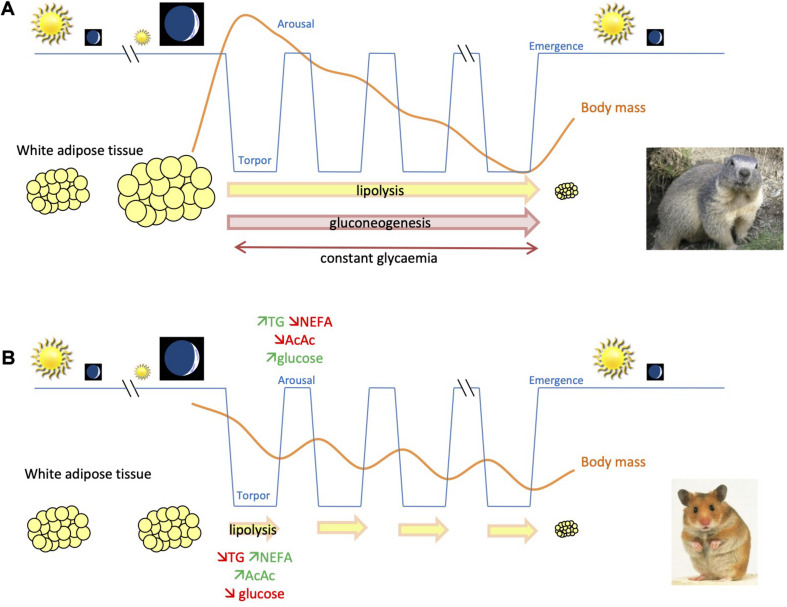FIGURE 1.
Schematic representation for comparison of body mass changes and use of energy substrates throughout hibernation in fat-storing and food-storing species. (A) In fat-storing hibernators, e.g., marmots, animals undergo a long-term fast during winter by mobilizing mainly lipids, accumulated prior to winter in white adipose tissue, to sustain their energy requirements. This leads to a substantial reduction of body (fat) mass of individuals over their winter hibernation fast. Energy can also come from gluconeogenesis, i.e., the synthesis of glucose from non-carbohydrate substrates during hibernation. (B) In contrast, food-storing hibernators, e.g., Syrian hamsters, experience a state of intermittent fasting during winter hibernation. Animals mobilize lipid stores during the torpor phases, but feed during interbout arousals, using glucose as main source of energy, and partially restore their body lipid/glycogen stores. In contrast to fat-storing species, glycemia decreases during torpor, which could constitute an endogenous signal for food-storing hibernators to arise from torpor and feed during interbout euthermia.

